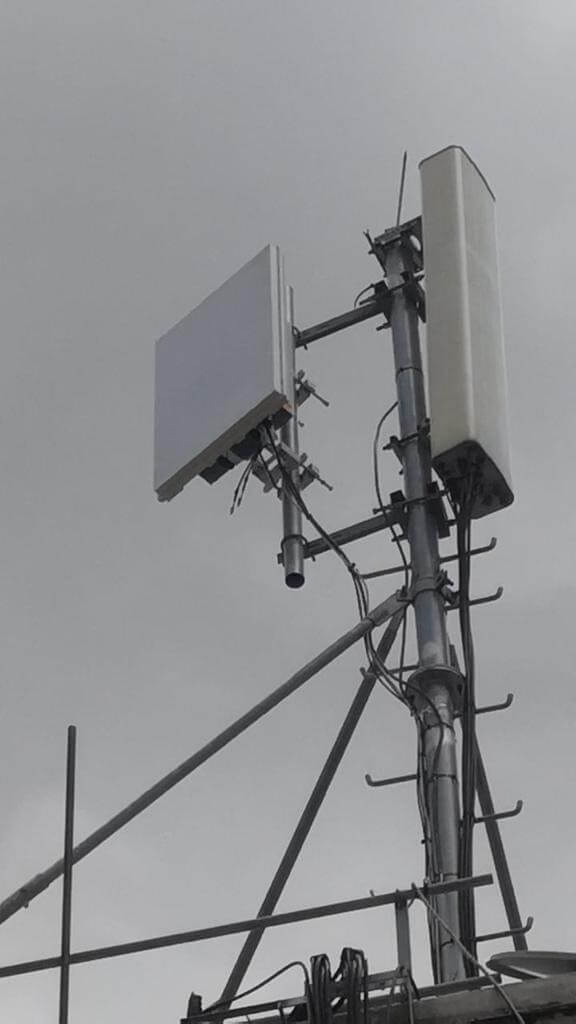
- ZTE partnered U Mobile to successfully conduct the first LTE Frequency division duplex (FDD) dual band massive multiple-input multiple-output (MIMO) field trial in Malaysia
- In the trial with U Mobile, the average Physical Resource Block (PRB) utilisation was reduced by 20.1%. PRB minimises the peak-to-average power ratio, minimises the overall power consumption (CAPEX) and enhances the quality of user experience.
KUALA LUMPUR (28 Feb 2022): Telco operators in Malaysia are warming up to the potential of massive antenna arrays, otherwise known as Massive MIMO (Multiple Input, Multiple Output).
The ability to increase the spectrum efficiency by about 2-fold in comparison with traditional macro sites has motivated many telcos to consider modernising some parts of their network building strategies.
Recently, ZTE's esteemed customer, U Mobile, successfully conducted the first LTE FDD (Frequency Division Duplex) Massive MIMO, field trials in Malaysia using ZTE's latest product, the latest FDD Massive MIMO dual-band active antenna system (AAS).
The equipment works in dual band of 1800MHz and 2100MHz simultaneously. With 32 transmitters and 32 receivers (32TR) massive MIMO configuration and advanced algorithms, the latest Active antenna product significantly enhances spectral efficiency, increases data rates, and extends cell coverage. In real life, it achieves more than 2.13 capacity improvements compared to existing dual-antenna macro base stations.
The trial with U Mobile began in November 2021 in the Klang Valley and was completed a month later.
ZTE and the telco deployed 32 transmitters and 32 receivers (32TR) with 128 antenna elements. Traditionally up to 6 remote radios units would be required to provide coverage in the same area, however using the latest ZTE compact dual and products, U Mobile managed to save equipment space as well as installation and O&M costs.
U Mobile's Senior General Manager of Network Architecture and Planning, Quat Ou Jeng, said: "U Mobile's purpose is all about unleashing every potential, hence we are delighted to have collaborated with our long-term partner ZTE for the recent Dual-Band Massive MIMO Trials. The results have been very encouraging and show that its dual-band FDD MM is capable of alleviating 4G capacity bottlenecks at high traffic sites; this is especially relevant as connectivity demands have increased dramatically. U Mobile looks forward to more collaborations with ZTE."
ZTE's Managing Director for Malaysia, Steven Ge, said: "ZTE will continue to optimise FMM, which is the most proper 5G technology applicable to 4G and follows the 3GPP standardisation of Massive MIMO technology, leading the way from 4G to 5G and provide quality services. We will continue to support our customers through our leading-edge equipment and give them confidence through extensive field trials to validate their potential."
ZTE's FMM trials in Malaysia and elsewhere have shown that it can modernise the network and can alleviate the capacity bottlenecks of high traffic sites, though site selection criteria need to be carefully defined before implementing the FMM solution.
ZTE's latest AAU equipment boasts high output power, large capacity while minimising interference. With 128 antennas elements, more independent data streams can be transmitted simultaneously, with trials demonstrating that it can achieve more than 2.13 times capacity improvement compared to existing 2*2 MIMO macro base stations.
While greatly improving the overall cell capacity with the same spectrum resources, the product manages to drastically reduce the interference for inter-users through a highly precise channel estimation algorithm and advanced pre-coding technology. This greatly reduces the inference caused by various user equipment which are in the same cell.
Furthermore, ZTE's advanced technology of hybrid cell and dual-frequency band equipment enhances user experience and enables further connectivity to the end-users.


